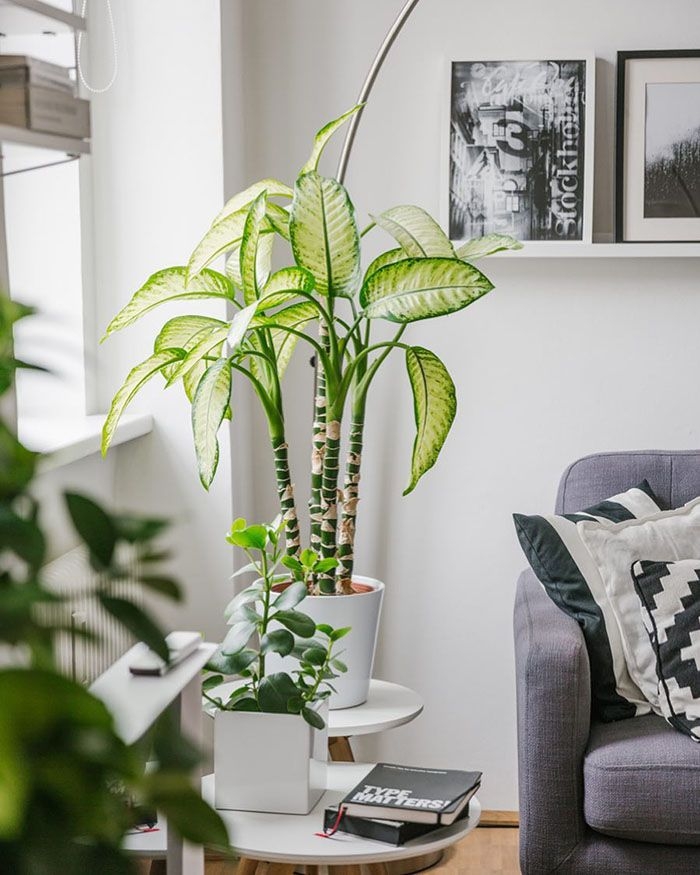
Image: @bellaflora
A green space in your home can become a source of joy and a respite from the hustle and bustle of the outside world. It does not matter whether you live in a small flat or a spacious detached house. You will notice improvements to your mood and wellbeing as soon as you add some plants to your interior. Scientists confirm that potted flowers can truly achieve a lot: from increasing our productivity to strengthening our immune system.
To turn your home into a green haven, all you need is a little bit of your time to research the plants that work best for each room and its specific conditions. Here are some useful tips to get you started.
Most house plants do not like direct midday sun, so be careful about where you place them around your home. There are a few tell-tale signs to look out for such as burnt leaves, the appearance of spots on them and their rapid shedding.
While plants release oxygen throughout the day, it is worth noting that the process of photosynthesis stops at night. For this reason, many of these health pots actually switch to a different mode come night time and start emitting carbon dioxide. However, such plants as orchids, succulents, sansevierias (or snake plants) and bromeliads buck the trend and release oxygen at night. And this is exactly what makes them the perfect candidates for your bedroom.
Not all plants do well in the heat. If you have one room with particularly scorching temperatures, turn to ferns, palms, succulents and cactuses. These heat-loving chaps love it hot, while other plants that are not as adapted to high temperatures will likely dry out.
Do not skip the bathroom. Plants in this part of the home can promote relaxation and create a pleasant atmosphere of a home spa. The chances are yours is a room without windows with high humidity, meaning that only some plants can survive in here. Here is a handful of those that will find themselves perfectly comfortable in these conditions: dracaena sandera (lucky bamboo), sansevieria (snake plant), chlorophytum (spider plant), some orchids (phalaenopsis and paphiopedilum) and kokedama (Japanese ball moss).
Even the most resilient plants cannot withstand constant heat, splashes of fat and soap water. This is why it is best not to place plants right next to your sink or hob. If you have a spacious kitchen, you do not have to limit yourself in size and can even place a small tree on your kitchen floor. In other cases, plants like aloe, anthurium, crassula, ficus and chlorophytum will do the trick. What they all have in common is meaty shiny leaves which are easy to clean in a space like your kitchen which is bound to get more greasy than other rooms.
Why not dedicate your window sill to something useful by starting a small allotment of your own? Sufficient light will allow you to grow edible plants all-year-round, while the scent of these aromatic herbs will no doubt boost your appetite and refresh your senses. Basil, thyme, watercress, dill, parsley – the choice is limitless and depends entirely on your preferences.
The living room is typically the biggest and most ornate room for hosting guests. This is a suitable place for big wide-leaved plants placed directly on the floor. But if this room is small, look for crawling or small plants in hanging baskets or planters.
Most people kill their house plants without realising it by pouring water into the centre of the pot and giving much more water than required. This water has nowhere to go so it sits around the plant. Excess stagnant water causes root rot which ultimately kills the plant.
If your pot has drainage, it is best to water from the bottom up by pouring it into the tray. If not, regularly distribute water using a spray, which helps increase humidity around the plant and keep it healthy.
If you are a complete novice to plants, here is a list of those that would suit you perfectly. All of them are great at decorating your interior and are also easy to look after: